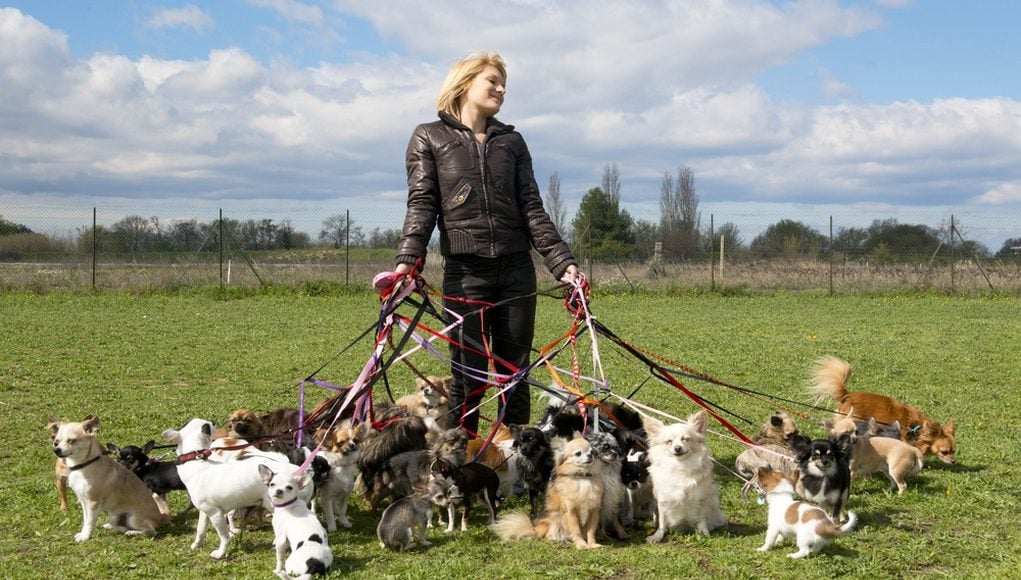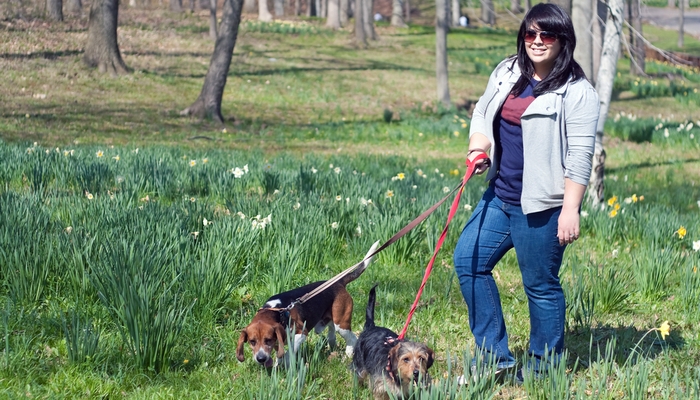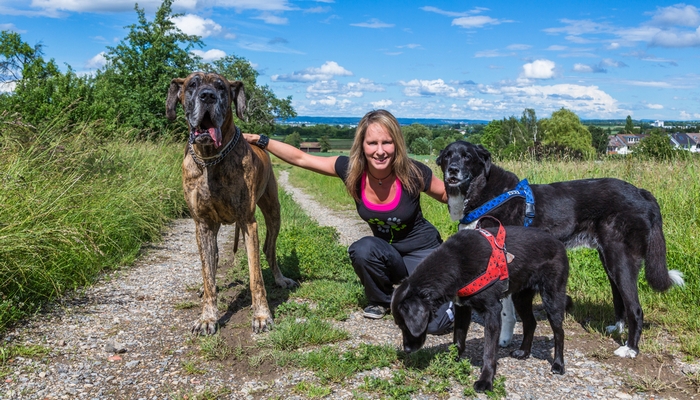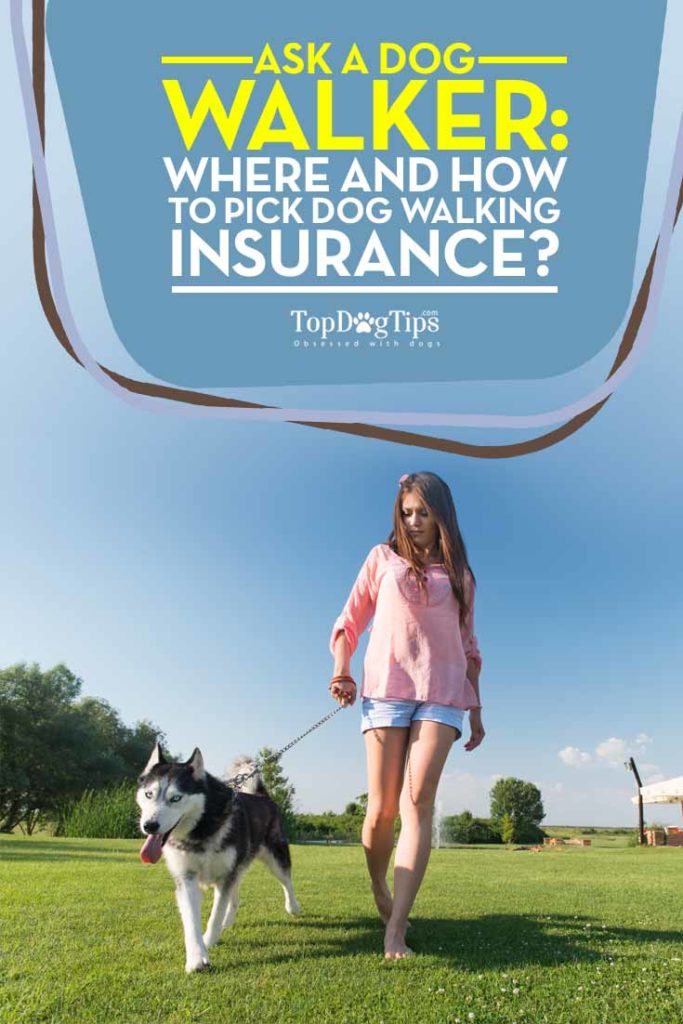Dog walking is a rewarding but somewhat risky business for both walkers and clients. People are suspicious of letting strangers into their home, especially when they are away, and with good reason. This is why dog walking insurance and bonding are absolutely crucial to becoming successful in this business.
Table of Contents
When I first decided to start my dog walking business, I naively didn't even think about needing either, but over time I realized that it was best for me and my clients to have proper dog walking insurance. I have also learned about a few things to keep an eye out for when looking for pet business insurance, as well as what a reasonable price looks like.
If you decided to become a dog walker, my first advice is to look into good dog walking insurance plans. There are too many options but after some research you'll find the best dog walking insurance that fits your specific need.
ASK DOG WALKERS: How Much Do Dog Walkers Get Paid?
How to Pick Dog Walking Insurance
What is Covered by Dog Walking Insurance?
The main part of dog walker insurance or pet sitter insurance is commonly referred to as “Care, Custody and Control” Coverage (CCC). Almost every responsible dog walker and pet sitter will have the CCC Coverage.
Although the jobs can be different, dog walking insurance is the same thing as pet sitting insurance, and it works similarly to many other pet business insurance plans. This is because the associated risks are essentially the same, or very close to being the same.
Any job that requires you to be responsible for someone else's property (or in this case, an animal) will pose a high risk for legal issues. It is best to go over details thoroughly before choosing a plan, but most dog walking insurance plans cover basics like below.
1. Dog's injury in your care
Veterinary expenses if the dog is injured while under your care are always covered by dog walker insurance policies. For example, if you are walking a dog when he steps on some broken glass and needs to have it removed from his paw – that would be covered.
These policies will also typically cover medical expenses if the dog injures someone else while under your care. If a child runs up from behind to pet a dog you're walking without asking and the dog bites the child, any medical treatment needed will likely be covered. Make sure to find a policy that includes this, as our dogs are unpredictable.
2. Property damage
Property damage caused by pets while they are in your care is also typically covered by most dog walker insurance policy providers. An example of this would be if you arrive to take the dog for a walk and while you are getting his leash, he soils an expensive rug.
Also, if you return from a walk and offer the dog a treat, he could get excited and knock over a glass vase on a nearby table. Instances like these would all be covered under the right dog walker insurance policy.
3. Locksmith services
Key and lock replacement doesn't sound like something that would be included in a dog walking insurance plan (and not all plans cover this), but it's definitely something worth considering. You'd be surprised how often dog walkers have to deal with this issue.
If you drop the client's key at the dog park and can't find them, they're going to need to change their locks. You can bet that they won't be willing to pay for that themselves. You need an insurance policy that will cover the locksmith charges to get into the home initially and the expense of paying for new locks to be installed.
What is Bonding?
Bonding is a term that most new dog walkers will be unfamiliar with but basically, the “bonding” insurance protects your clients against any losses done by the contractor, in this case the dog walker (meaning you). Customers well-versed in pet sitting services will often call and ask you whether you're insured and bonded, and you better say “yes!”
By purchasing a pet sitting bond, you are providing a form of security for your customers. In some ways, it is simply a show of good faith, and an extra measure taken to assure clients that you have no intention of abusing your rights as a person with entrance to their home and the well-being of a beloved family member.
In terms of what bonding actually covers, it promises compensation if a client were to be able to prove you had stolen from them or otherwise vandalized their property. The financial compensation associated with dog walker insurance bonding should be of little concern to you, since you have no malicious intentions when entering a dog owner's home.
Even though technically bonding pet insurance is for large dog sitting companies in case their clients (independent contractor dog walkers/pet sitters) will steal or otherwise cause any losses to their customer, sole proprietors (meaning, if you're the only “employee” in your own dog walking business) should still consider bonding simply for their customers' peace of mind.
If You're Working for a Company
There are pros and cons to working for an existing dog walking service, company or app such as Rover, Wag Walking, Fetch or something local to your area. However, being hired for such a company is the easiest way to start as a dog walker.
If you want to become a dog walker but don't have experience or clientele, and don't mind working as an independent contractor for a pet sitting company (instead of working for yourself) that sets your rates for you and takes a percentage of your earnings, using an existing company to launch yourself is the easiest way to get into the business.
The advantage is…
You don't have to make the choice at all. After you get dog walking training, orientation and a clean background check, these companies and services will bond and insure you themselves, so you won't have the headache. And you can learn from the way they work.
This is a good option for someone who wants to walk dogs part-time for supplementary income, or for someone just starting out in the dog walking business and needing to understand all its intricacies. But more serious aspiring dog walkers should seek more autonomy as well as dog walking insurance that will transfer to any job they take.
The disadvantage is…
In the sort term, going with a pet sitting service company will save you a considerable amount of money and stress, but in the long term it may actually cost you and you'll lose some earnings if you consider the percentage that the company takes from your walks for their services.
For example, Rover takes 20% of new pet sitter's earnings, and 15% from slightly more experienced pet sitters. Wag takes a whooping 40% of what the client actually pays you for the pet sitting service.
If you work for such a pet sitting service company, their insurance will not cover jobs that you take outside of their system, which is a dangerous game to play. Some of them may even restrict you from working anywhere outside of the jobs they provide you with. Again, this is a great place to start to learn the ropes, but eventually you'll want to venture out on your own
If you plan on walking any dogs under the name of your own business, you need to have your own dog walker insurance plans. Even if you're just walking dogs for neighbors, friends and family members, it's never a bad idea to pick at least the cheapest plan. Just because you know the owner doesn't mean there won't be an issue that will cost you thousands of dollars.
Dog Walking Insurance Comparison
In the US, there are many pet sitting insurance providers to choose from (and more are popping up every month), and an intensive search will be the only guaranteed way to find the one that fits your specific needs.
I can give you some pointers on how to choose the best dog walking insurance plan, but remember that you'll need to read their plans fully to understand which one fits you based on where you live, the type of jobs you do, your clientele and other factors.
To help you get started, here are a few reputable sources for pet sitter insurance:
- Pet Sitters International (PSI)
- National Association of Professional Pet Sitters (NAPPS)
- Pet Sitters of America (PSA)
The PSI and NAPPS both offer coverage through the Business Insurers of the Carolinas and require a membership to purchase dog walking insurance. The PSA coverage costs an annual base rate of $190.00 and does not require an additional membership fee.
A membership fee for PSI can be purchased for $140.00 and a NAPPS membership costs $135.00 per year. These memberships give you access to training courses for dog walker certification in addition to pet sitting insurance. However, the insurance itself is an extra cost, and can run anywhere from $300.00 to $600.00 per year on average.
Which one to choose?
Most pet sitter insurance providers will have their pros and cons, and it will depend on you and your personal situation which you prefer better and what fits your needs.
For example, PSA may seem like the obvious choice based on price, but the insurance provided by NAAPS and PSI covers just about everything in their base rate while PSA is constructed around the ability to add-on for things like property damage.
In the end, it's up to you to find which strategy works best for your business.
Take Home Message
The best dog walking insurance for you will depend on the way you want to run your business and what services you want to offer. It's always best to do some research and look in depth at what each plan offers. There are also phone numbers on each company's website that you can call for clarification about their policies – don't be afraid to ask.
If you're completely new to dog walking business, my advice would be to start with a pet sitting service first where they will teach you the ropes of how this business model works. You'll get the insurance and bonding, and you'll learn how to be careful and considerate, and become a professional dog walker. After that, you can venture out on your own and you'll know more about pet sitting insurance and the business itself.
READ NEXT: 7 Tips on How to Be a Successful Dog Walker
















